Robert Frost ... in Mexico!?!
|
|
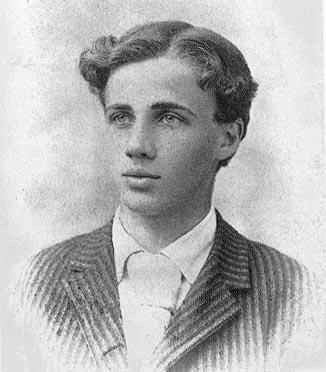
The youthful poet
*
Español
February 9, 2025
by Philip Gambone
I suspect that, like me, most readers of Robert Frost (1874-1963), have tended to think of him as the quintessential New England poet. "Few poets, before or after, have so consistently or specifically evoked a particular place," writes Jay Parini, one of Frost's many biographers. It's interesting, then, to note that Frost traveled more than any poet of his generation, teaching, lecturing and giving readings all over the United States. And while he was, by his own account, "not much on foreign parts," he visited many foreign countries as well.
Frost's first foray abroad was to England, where he spent a little over two years (September 1912 through February 1915), working on poems that went into his first two collections. In 1928, he and his family again traveled to Europe, where he met fellow poets William Butler Yeats and T.S. Eliot. Later, there were other trips: to Cuba in 1939 ("The land is rich: the people are miserably poor"); to Brazil in 1954, for the World Congress of Writers, and afterwards a short visit to Peru; and to Israel, Greece and England in 1961. Frost's last foreign trip, in August 1962, was to the Soviet Union, where he met Khrushchev and the poets Yevgeny Yevtushenko and Anna Akhmatova.
Frost never visited Mexico. But his very first published poem, when he was 17, was based on William Prescott's classic, The History of the Conquest of Mexico, which Frost read in the summer of 1889 while working on a farm. His boyhood imagination thrilled to the tale of Cortés's chaotic retreat from the Aztec city of Tenochtitlán during the Spanish conquest of Mexico. That event came to be called "la noche triste" or the "sad night," and Frost wrote a ballad about it with the same title.
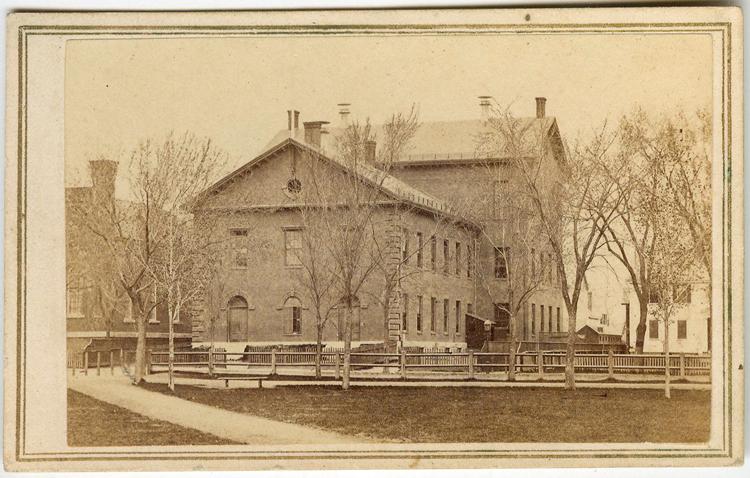
Lawrence High School
*
"The lines came into my head walking home from school," he later recalled. "I remember the time so clearly. I recall how there was a wind and darkness. I had never written a poem before, and as I walked, it appeared like a revelation, and I became so taken by it that I was late to my grandmother's." The next day, Frost took his poem to the editor of his school's newspaper, who accepted it immediately. "La Noche Triste" was published in the Lawrence (Mass.) High School Bulletin in April 1890.
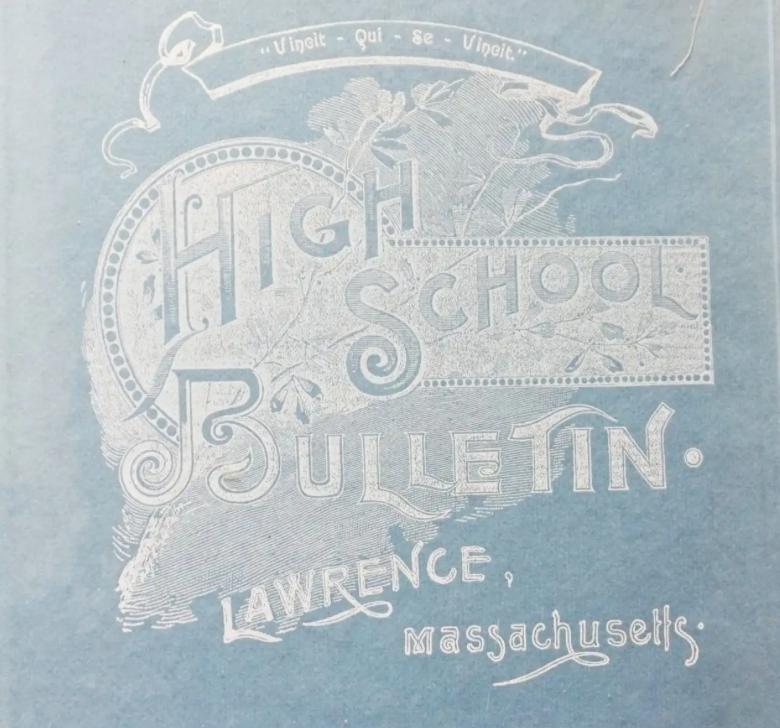
The poem opens ominously on a dark night, black clouds obscuring the sky. Young Frost presents us with a grim panorama of the Aztec city holding out against the bloody siege by Cortés and his men: "the peace / And regal splendor which / Once that city knew are gone, / And war now reigns." The cries of the wounded Spaniards break the stillness of the night. Cortés, his heart firm, his mind constant, has decided to abandon his siege. Each of his remaining men now takes his place, awaiting "the signal, that / Will start the long retreat."
After this prologue, Frost shifts to ballad form: quatrains (four-line stanzas) that rhyme on the second and fourth lines:
|
|
|
|
Anon the cry comes down the line,
The portals wide are swung,
A long dark line moves out the gate,
And now the flight's begun.
| |
|
|
One of Cortés's men, "valiant Leon," waits beside his cannon, ready to light the fuse. But he is felled by the "tzin" (a Nahuatl suffix that Frost picked up from Prescott, and which he used as a synonym for "leader"), who crashes his mace into the Spaniard's armor.
|
|
|
|
Falling, he died beneath his gun, --
He died at duty's call,
And many falling on that night,
Dying, so died they all.
| |
|
|
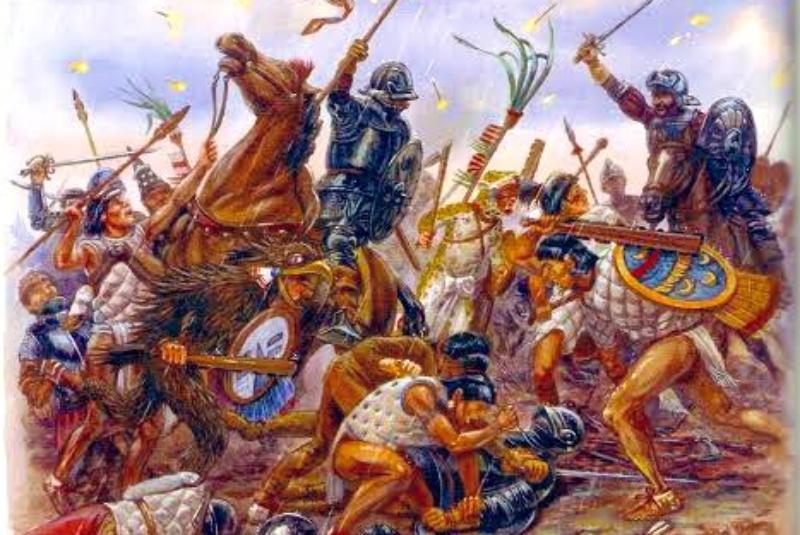
The teenage Frost was less concerned with the morality of the Spanish Conquista than with the stalwart sense of "duty" that Leon, Cortés, and the other Spaniards displayed. In that respect, it's interesting to note that on his 1962 trip to the Soviet Union—72 years after he wrote "La Noche Triste"—he could say to Khrushchev that he admired the way the Russian leader used power with courage and audacity. Courage and audacity are the two major traits the young Frost most identified with in Cortés.
With Leon dead, the men begin to see that all is lost. In "wild despair," the Spaniards press forward, intent on escaping the city they have not been able to take. In the chaos that ensues, some drown in the water; others frantically scramble over the dead.
Frost then pauses to give us a picture of Cortés, "surrounded and alone … / upon his faithful steed." He is cautious, alert to any further danger that might bring grief to his remaining men. The poet assures his readers, that despite the catastrophe, Cortés's future will be one full of "deeds of brightest fame, / Which in the ages yet to come, / Would light the hero's name."

Hernan Cortés
*
The Spaniards make straight for the causeway and go "trooping o'er." Yet hardly have they reached the other side when, wafting along on the wind comes the "rolling of the snake-skin drum" and the sound of the conch shell.
|
|
|
|
What terror to each heart it bears,
That sound of ill portent,
Each gunner to escape now looks,
On safety all are bent.
| |
|
|
In wild despair, they press on to the next canal, which is "held on all sides by foe and sea." Like deer within a corral, the Spaniards—rushing to and fro—are trapped. The "infidel" sweeps over them, inflicting further misery during the long, slow night.
At the climax of the poem, the Aztec leader confronts the Spanish:
|
|
|
|
A war cry soundeth through the night,
The 'tzin! the 'tzin! is there,
His plume nods wildly o'er the scene,
Oh, Spaniard, now beware!
| |
|
|
But the Aztec, his thirst for vengeance satisfied, wheels around. As the sun comes up, both sides "go their sep'rate ways." On the ground, "the dead men lie, / Trampled midst gold and gore." The remaining Spaniards—Prescott tells us they had been reduced to "a fourth, or perhaps fifth, of the original force with which they entered the capital"—make their way "o'er hill and plain" to reach the coast.
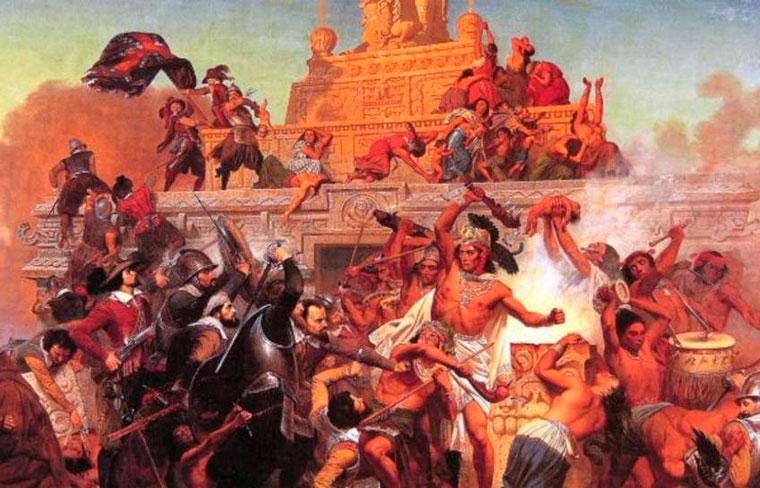
In the final two stanzas of the ballad, Frost turned to contemplating the ephemerality of glory. What had seemed like a moment of greatness for the Aztecs was to become, in fact, the final days of their magnificent empire.
|
|
|
|
The Montezumas are no more,
Gone is their regal throne,
And freemen live, and rule, and die,
Where they have ruled alone.
| |
|
|
"The poem serves," writes an anonymous commentator on the website PoetryExplorer, "as a poignant reminder of the relentless march of history and the profound impact of human conflict and ambition."
As a piece of juvenilia, "La Noche Triste" is an interesting glimpse into the nascent talent of a boy who would become one of the most celebrated poets of the United States. But in and of itself, it is not a great poem. The language is sometimes archaic, rarely reaching the grandeur of Prescott's prose. Here, for example, is just one sentence from Prescott's account of the noche triste: "The infantry followed pellmell, heaped promiscuously on one another, frequently pierced by the shafts or struck down by the war-clubs of the Aztecs; while many an unfortunate victim was dragged half stunned on board their canoes, to be reserved for a protracted but more dreadful death." There's little of that kind of rich, inventive language in Frost's poem.
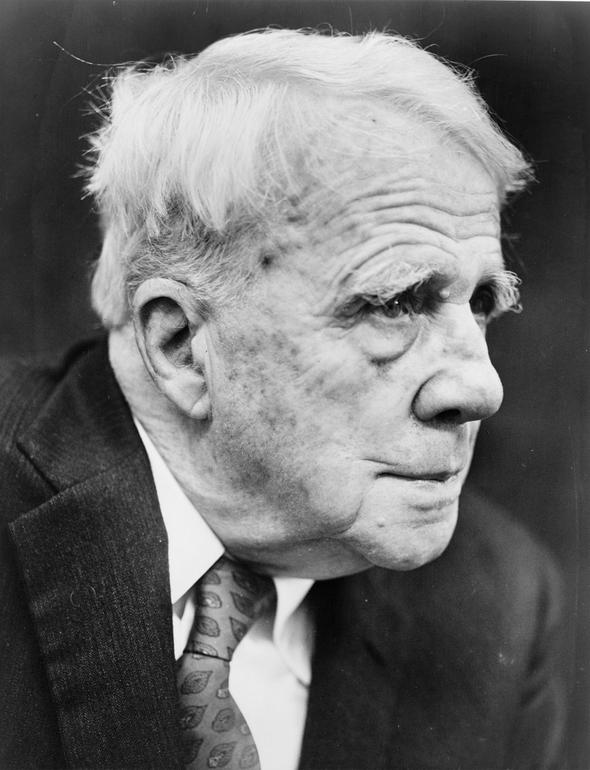
Nevertheless, "La Noche Triste" can be read with pleasure, if perhaps with some forgiveness as well. In the poem, we see a boy whose imagination was fired by a great adventure story, undisturbed by the morality of the historical event he's writing about. In an essay entitled "Robert Frost and a 'Native America,'" Eric Anderson noted that the mature Frost seldom wrote about Native Americans. But when he did, his views tended to be "contradictory" and "duplicitous," full of the "tensions that undergird the long history of intercultural encounters between Indians and non-Indians in the Americas."
By all means, read "La Noche Triste." While it never made it into Frost's Collected Poems, it's readily available on line. Enjoy his youthful exuberance and the way young Robert Frost tested out of his poetic wings. Then turn to his mature work to see how far Frost came as a poet and a moral thinker, someone who, as he once explained, approached life skeptically, "with more questions than answers."
**************

Philip Gambone, a retired high school English teacher, also taught creative and expository writing at Harvard for twenty-eight years. He is the author of six books, including As Far As I Can Tell: Finding My Father in World War II, which was named one of the Best Books of 2020 by the Boston Globe. His new collection of short stories, Zigzag, has just been published by Rattling Good Yarn Press and is available on Amazon and at the Biblioteca bookshop.
**************
*****
Please contribute to Lokkal,
SMA's online collective:
 ***
***
Discover Lokkal:
Watch the two-minute video below.
Then, just below that, scroll down SMA's Community Wall.
Mission

Visit SMA's Social Network
Contact / Contactar

|
|
|
|
| | |
Click ads
Contact / Contactar
 copyright 2025
copyright 2025
|
